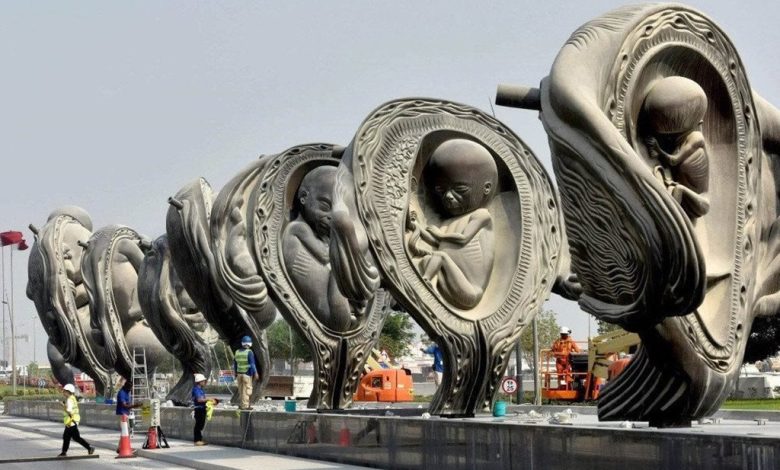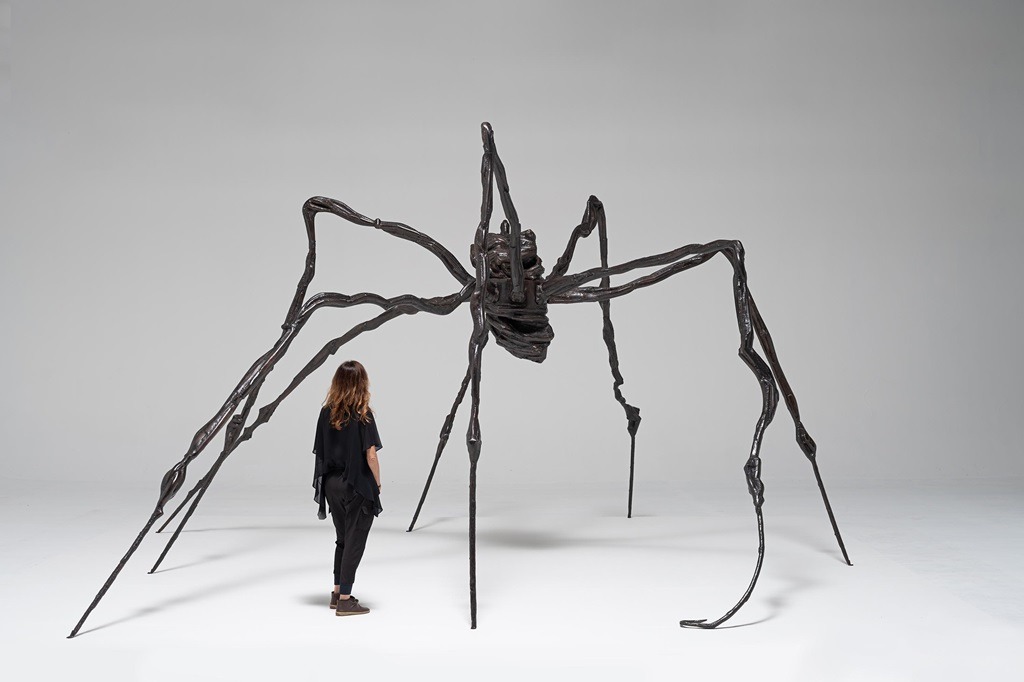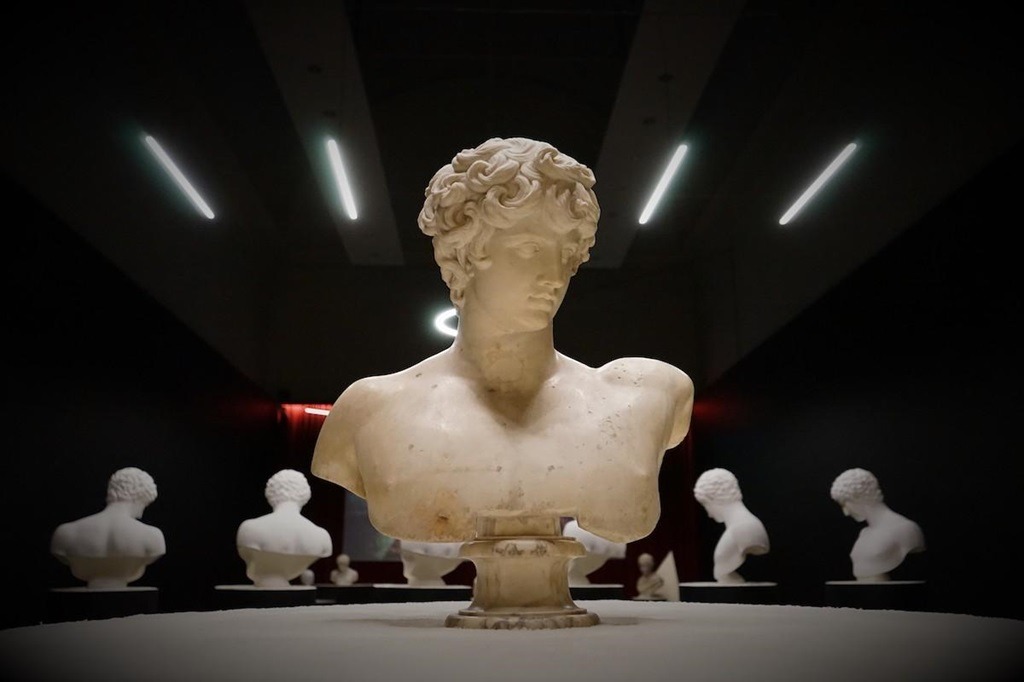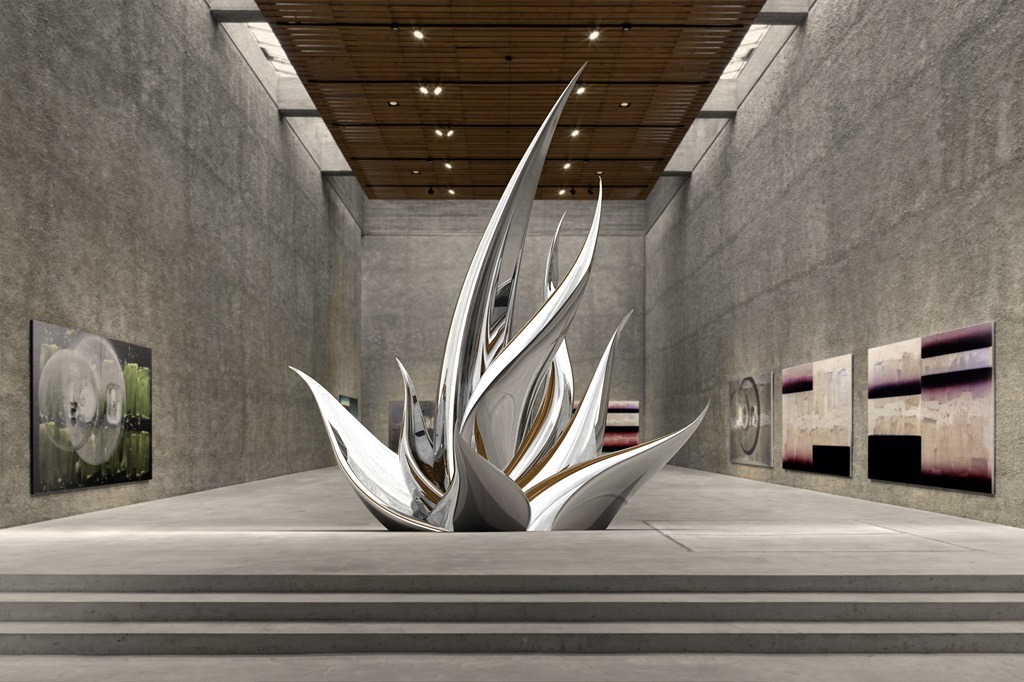What is Sculpture in Contemporary Art?

Sculpture has undergone a remarkable transformation in the contemporary art world. Once confined to traditional materials like bronze, stone, and wood, sculpture today encompasses various unconventional media, techniques, and conceptual approaches. Contemporary sculptors challenge notions of form, materiality, space, and process to create works that engage the viewer and provoke thought. Let’s discover what is sculpture in contemporary art.
Breaking with Tradition
For most of recorded history, sculpture was centered on the human figure, mythological narratives, and commemorative monuments made of bronze and stone. Sculptors like Michelangelo and Auguste Rodin perfected the realistic depiction of the human body and placed sculpture at the pinnacle of artistic achievement.
In the 20th century, artists began to break with classical ideals and experiment with abstraction. Modern sculptors like Constantin Brâncuși reduced the human form to elemental shapes and lines. Others like Henry Moore and Barbara Hepworth explored the openings and voids in abstract organic forms.
As sculpture moved into the contemporary era, artists completely abandoned the pedestal and traditional materials. New genres emerged, including kinetic sculpture, environmental art, light sculpture, and installation. The minimalist works of Sol LeWitt and the outdoor earthworks of Robert Smithson exemplified these new directions.
Conceptual Approaches
Many contemporary sculptors generate ideas before determining a work’s physical form. The concept or underlying meaning behind the work takes precedence over aesthetics.
Found objects are frequently used for their symbolic associations. Everyday materials like plastic, fabric, and Styrofoam enable artists to explore issues like consumerism and waste. Natural materials reference nature, spirituality, and impermanence.
Many works are temporary or designed to self-destruct. Performative and interactive pieces directly engage the viewer’s senses to convey ideas about participation, empathy, and the human condition. Artists also use sculpture to address culturally relevant themes like identity, gender, politics, and the environment.
Pushing the Boundaries of Art
Contemporary sculptors are continuously pushing the boundaries of their medium. They combine sculpture with other art forms like painting, photography, video, and sound. Artists also fuse sculpture with design, fashion, architecture, and product design to blur the lines between fine art and functional objects.
Public art, an expanding area of contemporary sculpture, brings meaning and beauty into shared civic spaces. Monumental land art produces awe-inspiring works directly in the landscape that interact with the elements. Found object art repurposes discarded materials into poignant compositions. Conceptual art uses unconventional materials and methods to question our perceptions and assumptions about art.
Many sculptors today utilize digital technology, robotics, 3D printing, and cutting-edge materials like bioplastics and intelligent fabrics. Novel techniques like deconstructing foam with a hot wire enable artists to explore new forms. Unexpected combinations of materials spark curiosity about surface textures and light effects.
Sculptors now exhibit their work around the globe, spreading ideas that resonate across cultures and societies. Art directly engaging the public through experience and interaction has become increasingly commonplace.
Notable Contemporary Sculptors

Many influential sculptors have impacted the contemporary art scene through groundbreaking innovations and globally recognized works:
Louise Bourgeois
This French-American artist challenged female stereotypes and brought themes of sexuality, psychoanalysis, and childhood into sculpture. She is famous for her gigantic spider structures, representing her mother as a protective, creative figure.
Anish Kapoor
Known for using reflective materials and geometric forms, Kapoor creates experiential works emphasizing space, color, and light. His public Cloud Gate sculpture in Chicago has become an iconic urban landmark.
Richard Serra
This American process artist pioneered industrial steel plates in minimalist sculptures, exploring weight, balance, and the viewer’s perception of space and mass. His monumental site-specific works, including Fulcrum in London’s former Tate Modern oil tanks, can be seen globally.
Rachel Whiteread
A prominent British artist, Whiteread is best known for her concrete casts of architectural spaces and domestic objects. Works like House and Untitled (One Hundred Spaces) exhibit ghostly negative space, memorializing voids within familiar structures.
Yours Fischer
A contemporary Swiss provocateur, Fischer creates entropic sculptures using materials like bread, wax, and clay that gradually decay and transform during exhibitions. His melting wax castings of iconic artworks question ideals of preservation and permanence.
Dana Schutz
Schutz produces colorful figurative paintings and sculptures influenced by abstract expressionism and pop art. Her work explores physicality, movement, and imaginative narratives surrounding the human body altered by vivid, dreamlike settings.
Ai Weiwei
This politically active Chinese dissident is renowned for contextualizing iconic ancient Chinese art forms with contemporary materials and themes. His installations highlight government corruption, refugee rights, and the global impacts of modernization.
Yayoi Kusama
A trailblazing Japanese artist, Kusama overcame sexism and racism to bring her psychedelic Infinity Mirror Rooms to international acclaim. Repetitive polka dots and spheres represent her hallucinatory inner world and modern-day anxieties.
Diverse Materials and Methods
Contemporary sculptors demonstrate astonishing creativity through their use of diverse materials and methods.
Here are some of the most common:
Found Objects
Every day, discarded items like plastic bottles, shopping carts, car parts, clothing, furniture, and recycled industrial materials are transformed into thought-provoking assemblages and accumulations.
Mixed Media
Combining steel, aluminum, wood, plastics, LED lights, video screens, and more creates visually dynamic hybrid sculptures exploring technology, ecology, urbanism, and interconnectedness.
Natural Materials
Wood, stone, clay, sand, ice, salt crystals, plant matter, and more reference cycles of decay and rebirth, as well as humans’ connection to nature. They are often used in environmental art and land art.
Textiles and Fiber
Fabric, yarn, felt, and thread is crafted into stunning abstract hanging sculptures, immersive cocooned environments, and politically charged objects addressing gender roles, identity, and craft.
Resins and Polymers
Plastics, epoxies, silicone, and urethane resins allow artists to explore biomorphic shapes, transparency, liquidity, layering, and luminous color transformations.
Kinetic Art
Motion, mechanical movement, and motorization are incorporated into abstract sculptures that morph and elicit viewer participation through cranks, levers, and touch sensors.
Light Art
Light bulbs, LEDs, projections, and reflective materials interact with space and the viewer’s perception through stunning installations and urban light displays.
Blurring Art, Design, and Function

Contemporary sculptors erode the boundaries between delicate art objects and functional design pieces. Their work often critiques and emulates consumer culture.
Everyday Objects as Art
Mundane items like cleaning tools, furniture, and advertising signs are replicated or displayed as art to examine habitual perceptions and provoke more profound reflection on everyday experiences.
Art Furniture
While still functional as seating, tables, and shelving, these handcrafted works double as visual commentary through unusual designs and material juxtapositions.
Ceramics and Glass
Vessels, vases, tableware, and glass objects elevate traditional craft techniques through conceptual narratives and exquisite contemporary forms. Their sensual materiality elicits touch and contemplation.
Sculpture in the Expanded Field
Sculpture today inhabits an “expanded field” extending beyond galleries and museums to engage the public sphere in new ways:
Public and Land Art
Monumental installations in plazas, parks, and city centers create focal points and photo opportunities while challenging social norms through form and materiality. Sprawling land artworks harmonize with or diverge from nature.
Performance Art
The artist’s body and actions become dynamic sculptural elements, transmitting conceptual and emotional experiences directly to the audience.
Wearable Sculpture
Artists design avant-garde clothing, accessories, and prosthetics as commentary on identity, society, and connectivity between the body and environment.
Architectural Sculpture
Building facades morph into undulating walls, metal screens, and protruding shapes, while creative teams blend art, architecture, and landscape design through a sculptural lens.
Positives and Controversies
Contemporary sculpture has greatly expanded art’s scope, inclusion, and accessibility.
But the breaking of rules and conventions inherent to avant-garde art also stirs debate:
- Public art provides beauty, joy, and shared identity for communities but can spark controversy over subject matter, taxpayer funding, and unauthorized installations.
- Museums struggle to collect and conserve contemporary sculptures with cumbersome sizes, unconventional materials, moving parts, digital media, performance elements, or decay.
- The rejection of plinths and clear boundaries between art and life can perplex casual viewers. Art that elicits intense reactions can also invite censorship.
- Co-opting everyday objects as art raises critiques of elitism and claims that anything can be art if an artist says so.
- Digital scanning and reproduction methods question the sculpture’s identity as a unique object imbued with an artist’s aura.
Despite some ongoing tensions, contemporary sculptors continue diversifying their field and bringing art into the thick of modern life.
The Future of Sculpture

We can expect sculpture in the coming decades to become even more experimental as artists utilize new technologies and materials.
Some possibilities include:
- Greater incorporation of digital media, sensors, and viewer interactivity through touch, motion, and smartphones
- New venues like immersive virtual or augmented reality
- Advanced fabrication with robotics and additive manufacturing
- Innovative biodegradable and smart materials responsive to the environment
- Dematerialization of objects into light, sound, or temporal experiences
- Artificial intelligence – generated and curated sculptures
- Focus on sustainability through upcycling, organic materials, and temporary works
The sledgehammer of contemporary art has shattered sculpture’s former constraints. With so many directions left to explore, the possibilities feel limitless. Sculpture will continue adapting to reflect emerging technologies, cultural dialogues, and the ever-shifting landscape of the human condition.
Conclusion
Contemporary sculpture shows that we have only begun to tap into art’s potential to challenge perceptions, transform spaces, communicate ideas, and spark contemplation and joy. Today’s sculptors ask us to re-examine what sculpture is and can be continually. Their creative spirit and bold vision will continue shaping the future of art in our public spaces, museums, and cities for generations to come. Contemporary sculpture celebrates the human imagination and our innate need to reshape the materials around us into new forms that reflect our dreams, fears, memories, and unbounded creativity.
FAQs About Contemporary Sculpture
Here are answers to some frequently asked questions about sculpture in the contemporary art world:
What makes a sculpture modern?
Contemporary sculpture rejects classical ideals and traditional methods. Instead, it embraces new materials, conceptual approaches, and interpretations of space that reference modern life and culture. Contemporary sculpture also engages with current political and social dialogues.
How does contemporary sculpture interact with the viewer?
Contemporary sculpture is often intended to be touched, moved through, and directly experienced by the viewer. Some works only fully materialize through viewer participation. Interactive and kinetic elements and unexpected materials compel the viewer to rethink their relationship and perceptions of art.
Why do contemporary sculptors use such unusual materials?
Unexpected everyday materials reference Pop Art’s engagement with consumerism. They enable abstraction by divorcing form from material function. Unconventional materials also help communicate conceptual themes related to economy, ephemerality, environmentalism, and technoculture. Their sensory qualities can elicit visceral reactions.
What are some key differences between modern and contemporary sculpture?
Modern sculpture from the early 20th century embodied emotional intensity, abstraction, and avant-garde formal experiments that broke from classical traditions. Contemporary sculpture from the mid-20th century onwards is more pluralistic but builds upon modernism’s conceptual and material innovation spirit.
How has public art changed in the contemporary period?
Public sculpture is now less focused on honoring leaders and war heroes. It increasingly aims to foster community, transform spaces, and communicate stories that resonate with diverse local populations. Public artists often interact with residents and incorporate the site’s culture and history. Interactive pieces also encourage public engagement and new perspectives.




